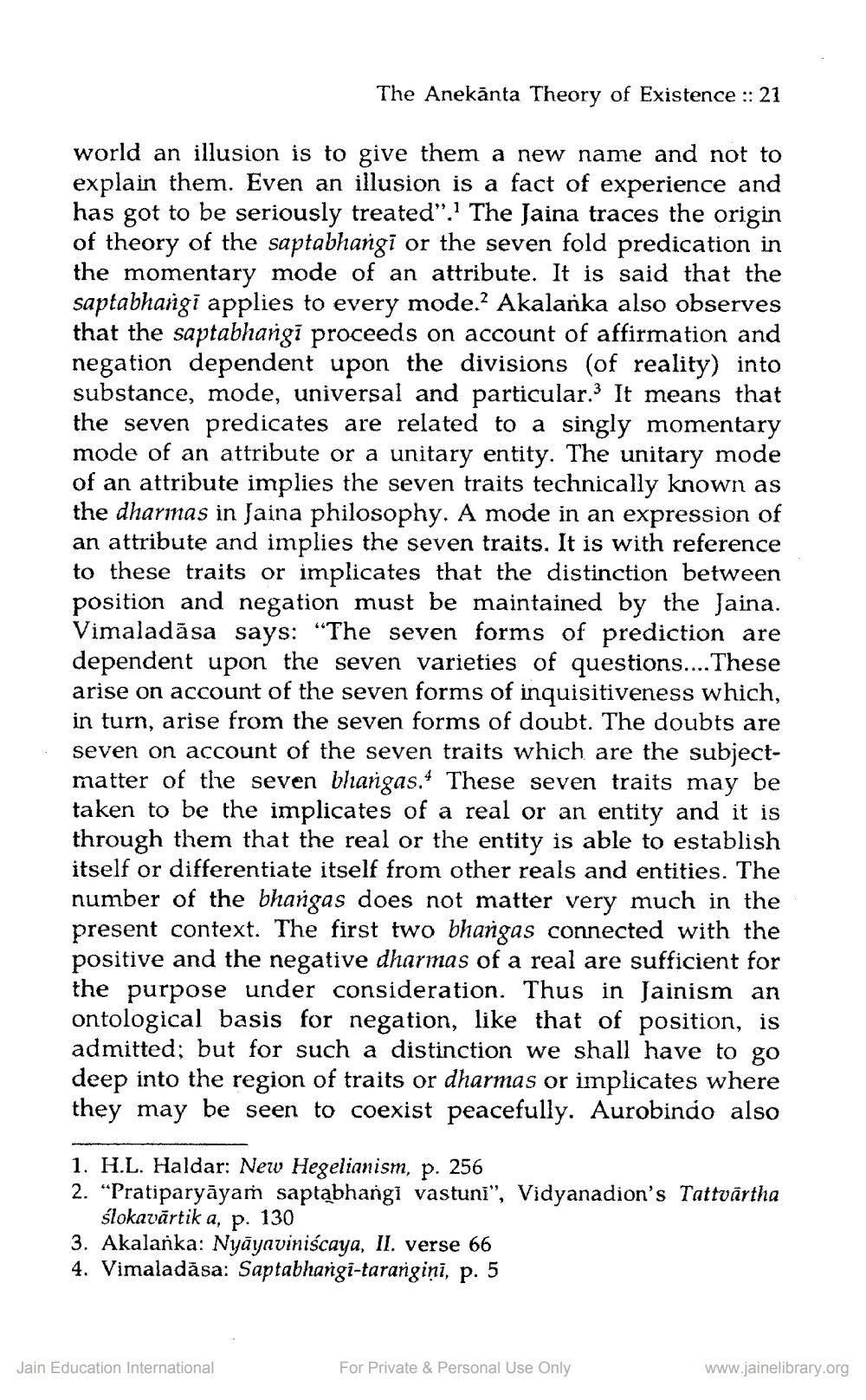________________
The Anekānta Theory of Existence :: 21
world an illusion is to give them a new name and not to explain them. Even an illusion is a fact of experience and has got to be seriously treated".' The Jaina traces the origin of theory of the saptabhangi or the seven fold predication in the momentary mode of an attribute. It is said that the saptabharigi applies to every mode.? Akalanka also observes that the saptabhangi proceeds on account of affirmation and negation dependent upon the divisions (of reality) into substance, mode, universal and particular. It means that the seven predicates are related to a singly momentary mode of an attribute or a unitary entity. The unitary mode of an attribute implies the seven traits technically known as the dharias in Jaina philosophy. A mode in an expression of an attribute and implies the seven traits. It is with reference to these traits or implicates that the distinction between position and negation must be maintained by the Jaina. Vimaladāsa says: “The seven forms of prediction are dependent upon the seven varieties of questions.... These arise on account of the seven forms of inquisitiveness which, in turn, arise from the seven forms of doubt. The doubts are seven on account of the seven traits which are the subjectmatter of the seven blargas.* These seven traits may be taken to be the implicates of a real or an entity and it is through them that the real or the entity is able to establish itself or differentiate itself from other reals and entities. The number of the bhangas does not matter very much in the present context. The first two bhargas connected with the positive and the negative dharmas of a real are sufficient for the purpose under consideration. Thus in Jainism an ontological basis for negation, like that of position, is admitted; but for such a distinction we shall have to go deep into the region of traits or dharmas or implicates where they may be seen to coexist peacefully. Aurobindo also
1. H.L. Haldar: New Hegelianism, p. 256 2. “Pratiparyāyam saptabhangi vastuni", Vidyanadion's Tattvārtha
ślokavārtik a, p. 130 3. Akalanka: Nyāyaviniscaya, II. verse 66 4. Vimaladāsa: Saptabhangi-tarangini, p. 5
Jain Education International
For Private & Personal Use Only
www.jainelibrary.org




